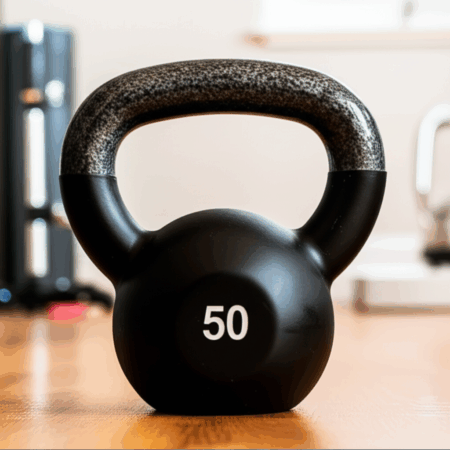Wahoo Fitness, a well-known brand in the fitness technology market, has recently come under scrutiny for its handling of tariff surcharges on certain products. Instead of explicitly stating the tariff as a separate charge, Wahoo has opted to bury it within the shipping costs, leading to customer confusion and accusations of a lack of transparency. This move has sparked debate about the ethics and practicality of such pricing strategies in the face of evolving trade policies.
The Case of the Missing Tariff
The issue came to light with the launch of Wahoo’s new TRACKR Radar, a cycling radar and light. While the device is listed at $199.99, U.S. customers are finding that the cheapest shipping option at checkout is a hefty $50. This significant increase in shipping costs has been attributed to tariffs on goods manufactured in China, where the TRACKR Radar is produced.
In contrast, Wahoo products made in Taiwan, such as the BOLT 3 and ROAM 3, do not carry the same high shipping charges. For European customers, shipping is even free for these products. The discrepancy in shipping costs has led many to conclude that Wahoo is discreetly passing on the tariff burden to U.S. consumers by inflating shipping fees.
Wahoo’s Explanation
Wahoo has responded to the criticism by stating that the decision to include the tariff in shipping costs was due to the rapidly changing tariff situation. According to a Wahoo spokesperson, it is not practical to constantly update the Manufacturer’s Suggested Retail Price (MSRP) to reflect these changes. Therefore, the company decided to implement a tariff surcharge within the delivery price, described as an additional “service charge”. Wahoo claims this approach complies with the conditions of online shopping search engines and platforms.
Is it a “Service Charge” or a Tariff?
Despite Wahoo’s explanation, many remain unconvinced. Critics argue that by labeling the surcharge as a “service charge” and burying it within the shipping costs, Wahoo is not being upfront with its customers. They contend that this lack of transparency is misleading and undermines the purpose of knowing the base price of the product.
Some argue that Wahoo should either increase the base price of the TRACKR Radar to reflect the tariff or clearly state the tariff as a separate line item at checkout. This would allow customers to make informed purchasing decisions and understand exactly what they are paying for.
The Impact of Tariffs on the Fitness Equipment Industry
Wahoo’s decision to adjust its pricing strategy is just one example of how tariffs are affecting the fitness equipment industry. The U.S. has imposed tariffs on goods imported from China, a major manufacturing hub for fitness equipment and components. These tariffs, which can be as high as 145% for certain products, have led to increased costs for manufacturers, distributors, and consumers.
Rising Costs and Consumer Impact
The tariffs have forced many companies to raise prices on their products. This has made fitness equipment more expensive for consumers, potentially impacting their ability to access the tools they need to maintain a healthy lifestyle.
For example, the Wahoo TRACKR Radar, originally priced at $199.99, now costs a minimum of $250 for U.S. customers due to the added shipping fee. Other companies, like Blueseventy, have announced price increases across their entire product line, citing the “extreme and unexpected increase in import tariffs”.
Supply Chain Disruptions
In addition to rising costs, tariffs have also caused supply chain disruptions for the fitness equipment industry. Many companies rely on components and materials sourced from China. The tariffs have made it more difficult and expensive to import these items, leading to delays and uncertainty.
To mitigate these disruptions, some companies are exploring alternative sourcing options in countries like Vietnam, Mexico, and Taiwan. Others are considering domestic manufacturing initiatives to reduce their reliance on imports. However, these changes can take time and investment, further adding to the challenges faced by the industry.
Opportunities for Some
While tariffs pose significant challenges, they have also created opportunities for certain segments of the fitness equipment industry. U.S.-based manufacturers that do not rely on imported components may find themselves at a competitive advantage. The tariffs can make their products more price-competitive compared to those of foreign companies facing import duties.
Moreover, the tariffs may incentivize innovation and the development of new technologies within the U.S.. Startups focused on software-based solutions, such as cloud-based coaching platforms and AI-driven training tools, may gain traction due to their lower dependency on hardware imports.
Alternative Approaches to Handling Tariffs
Wahoo’s decision to bury the tariff surcharge in its shipping costs is not the only approach being used by companies in the fitness equipment industry. Some retailers, like REI, have chosen to directly increase the overall price of the affected product. This approach is more transparent, as it clearly reflects the true cost of the item.
Other companies are absorbing the tariff costs themselves, at least temporarily, to avoid raising prices for consumers. However, this strategy may not be sustainable in the long term, as it can squeeze profit margins.
Another option is to clearly state the tariff as a separate line item at checkout, allowing customers to see exactly how much they are paying in duties. This approach is the most transparent, but it may also deter some customers from making a purchase.
The Importance of Transparency
Regardless of the approach taken, transparency is crucial when it comes to handling tariff surcharges. Customers deserve to know why prices are increasing and how tariffs are affecting the cost of goods. By being upfront and honest about these issues, companies can build trust with their customers and maintain their loyalty.
Hiding tariff surcharges within shipping costs or other fees may be seen as deceptive and can damage a company’s reputation. In the long run, it is better to be transparent and explain the situation to customers, even if it means having to raise prices.
Navigating the Tariff Landscape
The tariff landscape is constantly evolving, making it challenging for companies to develop effective pricing strategies. To navigate this complex environment, businesses need to stay informed about the latest trade policies and regulations. They should also be prepared to adapt their strategies as needed to remain competitive.
Some strategies that companies can use to mitigate the impact of tariffs include:
- Diversifying their supply chains to reduce reliance on any one country.
- Negotiating contracts with suppliers to share the cost of tariffs.
- Investing in domestic manufacturing capabilities.
- Focusing on innovation and developing new products that are less reliant on imported components.
By taking these steps, companies can minimize the negative effects of tariffs and position themselves for long-term success.
Wahoo’s Current Product Line
Wahoo offers a range of fitness technology products, including bike computers, heart rate monitors, cadence sensors, power meter pedals, and smart trainers. Their products are designed to help athletes track their performance, train effectively, and achieve their fitness goals.
Some of Wahoo’s most popular products include:
- Wahoo KICKR: A line of smart trainers that provide a realistic indoor cycling experience.
- Wahoo ELEMNT: A series of GPS bike computers that offer advanced navigation and performance tracking features.
- Wahoo TICKR: Heart rate monitors that provide accurate and reliable heart rate data.
- Wahoo SPEEDPLAY: Power meter pedals that measure power output, cadence, and other cycling metrics.
Wahoo also offers a subscription service, Wahoo SYSTM, that provides users with access to a library of structured workouts and training plans. The subscription costs $14.99 per month or $149 per year.
Conclusion
Wahoo’s decision to bury tariff surcharges in its shipping costs has raised concerns about transparency and fairness. While the company claims this approach is necessary due to the rapidly changing tariff landscape, critics argue that it is misleading and undermines consumer trust.
The fitness equipment industry as a whole is grappling with the impact of tariffs, which have led to rising costs, supply chain disruptions, and increased uncertainty. To navigate this challenging environment, companies need to be transparent with their customers, adapt their strategies as needed, and explore alternative sourcing and manufacturing options. While the situation remains fluid, clear communication and ethical pricing will be key to maintaining customer loyalty and ensuring long-term success.







